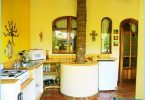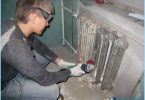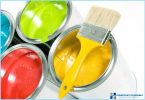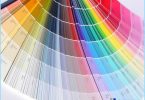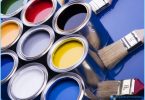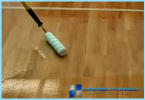The contents
After wallpapering the wall surface look perfect, the first is to apply a special composition. This will remove irregularities and prevent appearance of mold. Primer under the Wallpaper is selected based on the characteristics of the material of the wall.
Many argue that some types of Wallpaper applied with adhesive eliminates the need to use a special structure. But this is a misconception and in most cases leads to repeated repairs. There are exceptions – vinyl and fiberglass Wallpaper, inner surface of which is specially adapted for secure attachment to the wall.
What is the primer ↑
Primer is called homogeneous composition applied to the surface and create the conditions for a stronger connection of the surface and the Wallpaper. Because of this it saves on glue. Primer for the walls under the Wallpaper can be universal and used on any surface, but it is better to choose a specialized variant, designed for a specific surface.
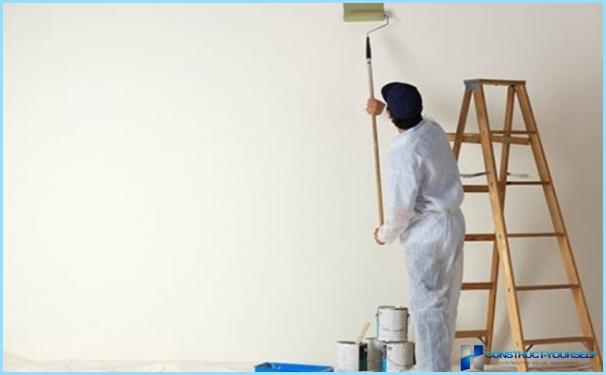
For example, a commonly used primer for plywood under the Wallpaper. From the correctly chosen variant depends on how quickly grabbed this composition. Its use minimizes the chance that after repair, will have any surface defects.
Priming walls before plastering ↑
Before painting or wallpapering, you must perform several operations to improve the bond of the material surface. Priming walls before plastering occurs in several stages:
- the choice of the specific composition,
- the acquisition of the primer products,
- surface preparation,
- application.
Each of the stages has multiple features that need to see more detail.
Objectives of the primer ↑
Priming walls under liquid Wallpaper prepares the basis for the application of the finishing materials and helps to strengthen it and protect against adverse factors. The objectives of such compounds include:
- improvement of adhesion of materials,
- alignment,
- linking multiple parts of the base between,
- reduction of paint consumption,
- protection from fungus.
Surface preparation ↑
Before you glue the Wallpaper, you must first prepare the walls, otherwise the end result may not hold. If the selected room already has the old coating, you should pay attention to what it quality. In the case where the wall does not have air bubbles and folds, you can leave it unchanged and start to apply the primer to the wooden walls underneath the Wallpaper.
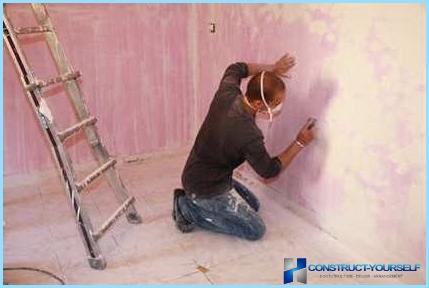
To hang Wallpaper over old is not recommended in the following cases:
- there are already some layers,
- when the room glued vinyl Wallpaper and that the owner is going to inflict on them the same,
- if there are irregularities,
- when the angles of the previous coating beginning to gather in folds.
The types ↑
Is there a better primer under the Wallpaper? A simple answer to the question will not work, as the choice is made on the basis of material on which is fixed the composition. On the market of construction materials there are several types (the type of the binder of the composition):
- Acrylic primer under the Wallpaper can be used on virtually any surface, and the drying time is still only 5 hours. Because of this it is used most often when adhesive Wallpaper.
- Alkyd formulations are best suited for coating wooden walls. Drying time is approximately 15 hours. Often they are purchased by owners of wooden country houses.
- Glyptal primer designed for metal surface treatment in rooms with little humidity. Such compositions are dry during the day.
- Perhlorvinilovye can be used for concrete and brick walls.
To put a certain part on the wall, it is enough to distribute it over the surface according to the manufacturer’s instructions.
The types of primers that are shared by appointment ↑
Depending on the purpose of compositions klassificeret as follows:
- corrosion,
- betokontakt,
- universal primer of deep penetration,
- antifungal,
- insulating.
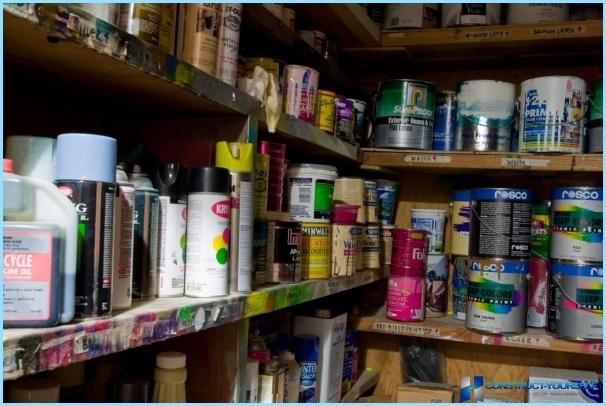
Mix betokontakt apply on the grounds of concrete and involves the creation of gypsum-lime plaster. Formulations of deep penetration securely fasten the base and top surface and create a layer that good adhesion to different materials. Their versatility lies in the fact that they are suitable for both paint and Wallpaper pasting.
Insulating allow you to create a thin layer that is able to withstand the effects of moisture. Some of the mixture to prevent even the appearance of soot on the walls. Anti-fungal primer to protect from mold and other similar entities.
Features of the training walls in the building ↑
By purchasing housing in newly constructed house, the owners want to ready an apartment, but getting to the room, they find uneven walls, concrete floor and a poorly installed outlet. In such cases, do not rush out and begin to glue the Wallpaper on the existing surface. All this should happen in several stages:
- the application of liquid makeup that hides minor irregularities and allowing the use of a primer,
- wall coating main composition,
- finish primer.
The consistency of the first composition should be similar to sour cream, to flow into all the cracks and provide a reliable basis for the subsequent layer. The second stage involves applying primer with a thickness of about 6 mm but it can vary. The process of the creation of a thin (about 3 mm) layer that can be easily erased with sandpaper. This is necessary to equalize surface.
The technology of self-production composition ↑
To prepare you only need construction glue PVA. It must be diluted in water in the ratio 1:2. First, in a container filled with 2 parts of water, and then mixed with PVA. To improve the characteristics of the generated structure, you can add crushed chalk. This method of cooking is the most simple and fast. It is worth remembering that after you create the mixture begins to lose its properties, so it should be done just before applying.
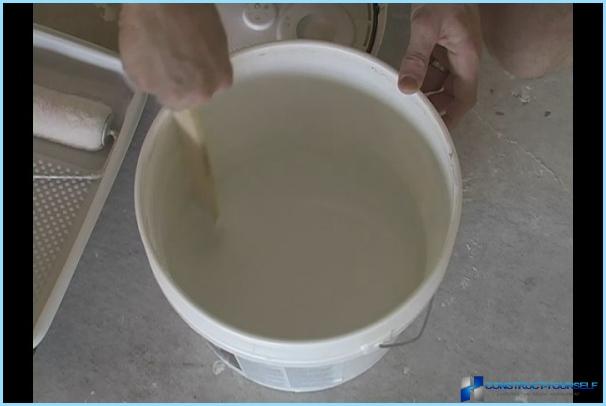
Common errors ↑
Primer on wood under the Wallpaper is applied to the entire surface, because otherwise it may form cracks or other defects. This is especially true when applying the paint. If you do not use a special primer, the coating may simply fall off. Re-repair in this case will be more expensive than pre-purchased composition for base coating.
Some owners decide to use a low-quality primer and in the end the glue is poorly grasped with the surface, leading to peeling Wallpaper in some places.

